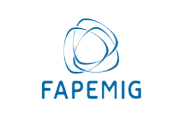Generation of digital terrain model and extraction of geomorphometric parameters from data collected by remotely pilot aircraft
DOI:
10.22238/rc2448269220191702247264Keywords:
Geomorphology; Geomorphometry; Digital Relay Analysis; Topographical attributes.Abstract
The relief morphometry can be analyzed by the extraction of geomorphometric parameters from digital terrain models (MDT). High resolution MDT can be obtained by aero-surveys with remotely piloted aircraft (RPA). The objective is to generate MDT from aerial surveying with RPA and to analyze the extracted geomorphometric parameters. It was performed aerial survey with a RPA model Phantom 4 Advanced in a first order basin located 3 km from the city of Medianeira (western Paraná). The data collected was processed in Agisoft PhotoScan 1.2.4. The generated point cloud passed through filtering and was interpolated via kriging in ArcGIS 10.1, resulting in the MDT. The geomorphometric parameters were extracted in SAGA GIS 2.3.2. The study area presents mostly planar-rectilinear slopes with slopes of up to 5 degrees and low values of UTI. In the first-order river valley, convergent-concave slopes were found marked by slopes of 5 to 9 degrees, associated with high UTI values. The generated MDT allowed the identification of features observed in the field. In conclusion, that data collected by RPA has great potential for morphometric characterization in relief detail.
Downloads
References
ARRUDA, G. P. de; DEMATTÊ, J. A. M.; SILVA CHAGAS, C. Mapeamento digital de solos por redes neurais artificiais com base na relação solo-paisagem. Revista Brasileira de Ciência do Solo, v. 37, n. 2, 2013. Disponível em:
http://www.scielo.br/scielo.php?pid=S0100-06832013000200004&script=sci_abstract&tlng=pt>.
ARUN, P. V. A comparative analysis of different DEM interpolation methods. The Egyptian Journal of Remote Sensing and Space Science, v. 16, n. 2, p. 133–139, 2013.
CHORLEY, R. J. Climate and Morphometry. The Journal of Geology, v. 65, n. 6, p. 628–638, 1957. Disponível em: <https://doi.org/10.1086/626468>.
CROSBY, B. T.; WHIPPLE, K. X. Knickpoint initiation and distribution within fluvial networks: 236 waterfalls in the Waipaoa River, North Island, New Zealand. Geomorphology, v. 82, n. 1–2, p. 16–38, 2006.
DSG - DIRETORIA DO SERVIÇO GEOGRÁFICO. Especificação técnica para a aquisição de dados geoespaciais vetoriais (ET-ADGV). Ministério da Defesa, Exército Brasileiro, Departamento de Ciência e Tecnologia. Brasília-DF, 2a edição, v. 2, 2016.
GUJJAR, P. et al. The MIR Flickr Retrieval Evaluation Proposal Based on User Tags and Textual Passwords. International Journal of Advanced Engineering, Management and Science, n. 4, p. 343–349, 2017.
HUNG, M. N. W. B. et al. Levantamento com veículo aéreo não tripulado para geração de modelo digital do terreno em bacia experimental com vegetação florestal esparsa. Raega-O Espaço Geográfico em Análise, v. 43, p. 215–231, 2018.
MARION, F. A.; MELLO FILHO, J. A.; SILVA, J. L. S. Análise da vulnerabilidade natural das águas subterrâneas por geoprocessamento no campus da UFSM–RS. Terr@ Plural, v. 4, n. 1, p. 65–76, 2010. Disponível em: <http://www.revistas2.uepg.br/index.php/tp/article/view/1132>.
MOHAMMAD, S. et al. The Understanding of Exchangeable Image File ( Exif ) Metadata of Images : Towards Disseminating the Awareness to the Society. In: 3th International Conference on Information Technology & Society, Anais...2017.
MOORE, I. D. et al. Soil attribute prediction using terrain analysis. Soil Science Society of America Journal, v. 57, n. 2, p. 443–452, 1993.
OLAYA, V. Basic land-surface parameters. Developments in Soil Science, v. 33, p. 141–169, 2009. Disponível em: <https://www.sciencedirect.com/science/article/pii/S0166248108000068>.
PIKE, R. J. Geomorphometry - diversity in quantitative surface analysisProgress in Physical Geography, 2000. .
RAAFLAUB, L. D.; COLLINS, M. J. The effect of error in gridded digital elevation models on the estimation of topographic parameters. Environmental Modelling & Software, v. 21, n. 5, p. 710–732, 2006.
REICHEL, H. R.; SAMPAIO, T. V. M. Geração de modelo digital do terreno (MDT) a partir da integração de métodos geoestatísticos e dados obtidos com uso de aeronaves remotamente pilotadas (RPAS). In: Anais do XII Simposío Nacional de Geomorfologia, Crato. Anais... Crato: 2018. Disponível em: <http://www.sinageo.org.br/2018/trabalhos/9/9-418-2071.html>.
SAHA, A. K.; GUPTA, R. P.; ARORA, M. K. GIS-based landslide hazard zonation in the Bhagirathi (Ganga) valley, Himalayas. International journal of remote sensing, v. 23, n. 2, p. 357–369, 2002. Disponível em: <https://www.tandfonline.com/doi/abs/10.1080/01431160010014260>.
SALAMUNI, E. et al. Knickpoint Finder: ferramenta para a busca de geossítios de relevante interesse para o geoturismo. Boletim Paranaense de Geociências, v. 70, 2013.
SILVA, J. M. F.; OKA-FIORI, C.; SILVEIRA, C. T. Geomorfometria: uma Análise de Conceitos, Métodos e Aplicações em Geografia Física. Revista Brasileira de Geografia Física, v. 10, n. 2, p. 558–583, 2017. Disponível em: <https://periodicos.ufpe.br/revistas/rbgfe/article/view/234008/27453>.
SILVEIRA, R. M. P. et al. ANÁLISE DIGITAL DO RELEVO EMPREGADA NO MAPEAMENTO DE UNIDADES GEOMORFOLÓGICAS. Geografar, v. 7, p. 43–68, 2012. Disponível em: <https://revistas.ufpr.br/geografar/article/view/26709>.
SILVEIRA, R. M. P.; DA SILVEIRA, C. T. Análise digital do relevo aplicada à cartografia geomorfológica da porção central da Serra do Mar Paranaense. Revista Brasileira de Geomorfologia, v. 17, n. 4, 2016.
SOPCHAKI, C. H. et al. VERIFICAÇÃO DA QUALIDADE DE ORTOMOSAICOS PRODUZIDOS A PARTIR DE IMAGENS OBTIDAS COM AERONAVE REMOTAMENTE PILOTADA SEM O USO DE PONTOS DE APOIO. Raega - O Espaço Geográfico em Análise, v. 43, p. 200, 2018.
SOPCHAKI, C. H.; SAMPAIO, T. V. M. Airborne Laser Scanner : principles of operation , recent uses in Brazil and regulatory issue from laws and parameters in Brazil and in the USA. Journal of Hyperspectral Remote Sensing, v. 6, n. 7, p. 338–353, 2016. Disponível em: <http://www.revista.ufpe.br/jhrs/index.php/revista/article/view/126/pdf>.
TACHIKAWA, T. et al. Characteristics of ASTER GDEM version 2. In: International Geoscience and Remote Sensing Symposium (IGARSS), Anais...2011. Disponível em: <https://ieeexplore.ieee.org/document/6050017>.
WESTOBY, M. J. et al. ‘Structure-from-Motion’photogrammetry: A low-cost, effective tool for geoscience applications. Geomorphology, v. 179, p. 300–314, 2012. Disponível em: <https://www.sciencedirect.com/science/article/pii/S0169555X12004217>.
Published
How to Cite
Issue
Section
License
Copyright (c) 2019 Revista Cerrados

This work is licensed under a Creative Commons Attribution-NonCommercial-ShareAlike 4.0 International License.
In this journal, the copyrights for published articles belong to the author (s), with the rights of the first publication belonging to Revista Cerrados. The articles are publicly accessible, free to use, their own assignments, educational assignments and non-commercial applications.


















